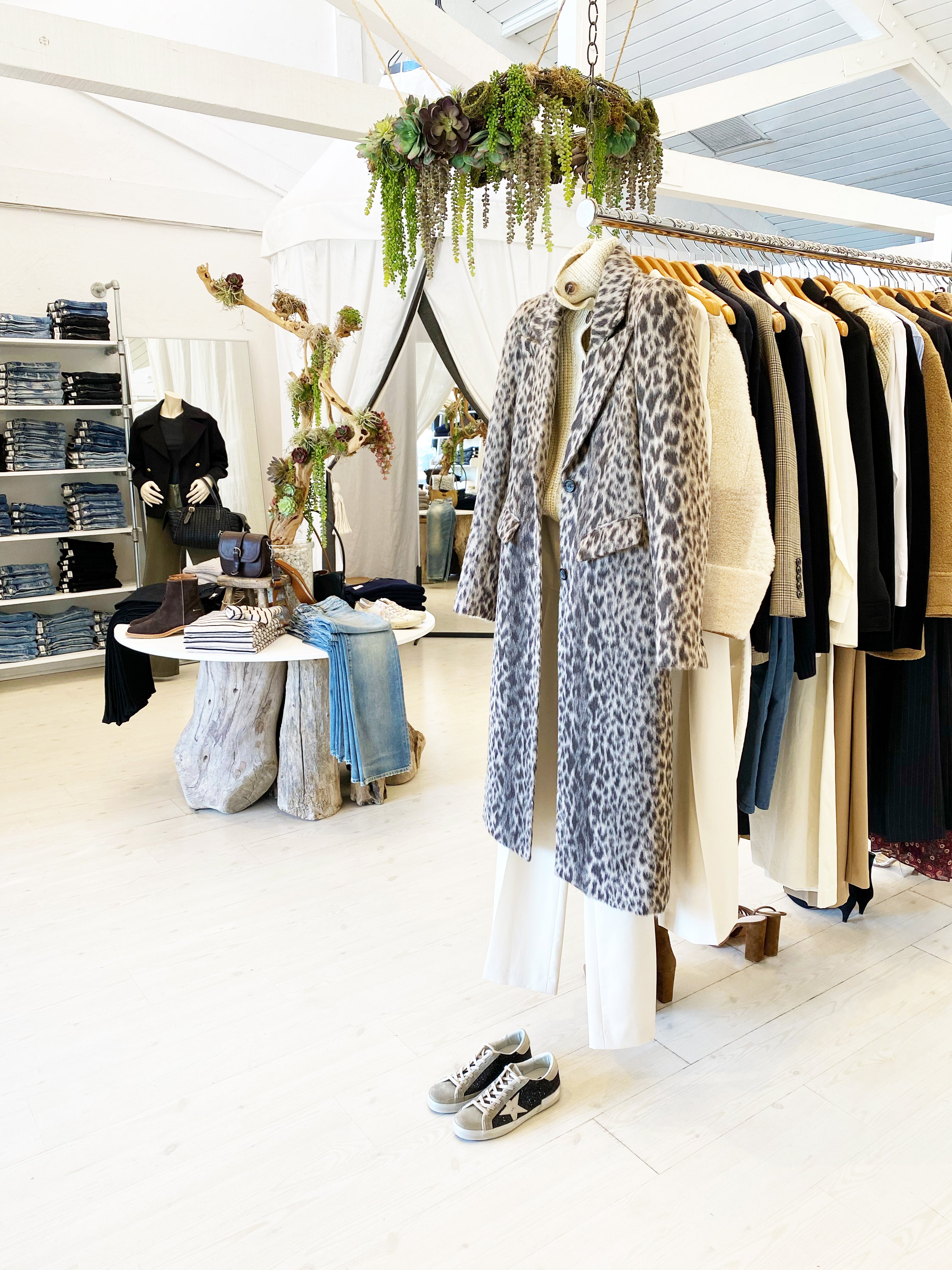Lasting Fashion: Just How Eco-Friendly Apparel Is Shaping the Future of Style
As the style sector encounters raising analysis over its environmental effect, the rise of lasting fashion supplies a promising choice that straightens design with ecological responsibility. boutique fashion. Just how does this movement absolutely affect the future trajectory of style, and what obstacles lie in advance in its prevalent adoption?
Innovative Lasting Materials
As the style market grapples with its ecological impact, ingenious sustainable materials have actually emerged as an important service for lowering ecological footprints. These materials not only decrease dependence on fossil fuels yet likewise lessen unsafe pesticide usage and water consumption.
In addition to plant-based materials, improvements in biofabrication have brought about the advancement of lab-grown textiles. Mycelium leather, acquired from mushroom origins, provides a flexible and biodegradable alternative to animal natural leather. Its production results in considerably reduced carbon discharges and water use, making it a much more lasting choice for stylist seeking to straighten with eco-friendly practices.
Recycled products are additionally obtaining grip, with polyester made from recycled plastic containers representing a significant advancement. This development not just draws away plastic waste from garbage dumps and oceans but additionally minimizes energy intake contrasted to generating virgin polyester. Together, these products underscore the potential for a more sustainable fashion business, paving the means for environmentally aware layout and production.
Eco-Conscious Production
Structure on the technologies in lasting materials, the fashion industry is likewise re-evaluating its manufacturing processes to further minimize environmental effect. Key strategies consist of decreasing water consumption, decreasing carbon exhausts, and removing harmful chemicals. By adopting closed-loop systems, suppliers intend to reuse water and power successfully, dramatically decreasing waste. The combination of renewable power resources, such as solar and wind power, right into manufacturing facilities better reduces dependence on fossil fuels.
An additional essential facet is the decrease of hazardous chemicals traditionally utilized in dyeing and completing textiles. Eco-conscious producers are moving in the direction of plant-based dyes and waterless dyeing technologies, which not only safeguard local environments however also improve worker safety and security. Developments like electronic printing reduce fabric waste and power intake, using a cleaner choice to typical techniques.
With the advancement of blockchain innovation, firms can currently supply in-depth understandings right into their supply chains, guaranteeing environmentally pleasant and ethical techniques at each action. As the demand for eco-conscious items expands, suppliers are compelled to introduce, making sure that the future of style is both lasting and fashionable.
The Surge of Upcycling
Upcycling, a transformative technique in lasting fashion, entails creatively repurposing disposed of materials into brand-new, premium products. This innovative strategy not just reduces waste but also lessens the demand for basic materials, consequently decreasing the ecological effect of clothing production. By rebuilding and reimagining existing items, developers and style brand names are able to infuse originality into their collections while advertising ecological responsibility.

Furthermore, the upcycling movement has equipped tiny businesses and independent developers, who frequently lead in advancement due to their agility and creativity. By taking advantage of the abundant availability of unused products, these entities add to a round economic climate, demonstrating that style can be both sustainable and trendy. With upcycling, the market takes considerable strides towards a much more conscious and responsible future.
Thrift Society's Influence
The burgeoning second hand culture dramatically reshapes the landscape of lasting style, highlighting the importance of mindful intake. This cultural shift motivates customers to embrace secondhand clothing, therefore lowering the need for new garment manufacturing and minimizing ecological influence. Second hand buying not only expands the lifecycle of garments but likewise decreases the carbon footprint connected with production, transporting, and disposing of garments.
A vital facet of second hand culture is its democratization of fashion. By offering a wide array of designs from various periods at affordable rates, second hand stores make style easily accessible to a more comprehensive audience. This ease of access fosters a feeling of uniqueness and imagination, as consumers mix and suit one-of-a-kind items to curate individualized closets without adding to the rapid style cycle.
Additionally, thrift culture advertises circularity in style, straightening with the principles of a circular economic situation. As even more customers and developers accept second hand society, the style industry is obliged to adjust, look at this now incorporating lasting practices to satisfy the growing need for eco-conscious alternatives.

Future Trends in Style
Style's advancement is significantly formed by technical innovations and sustainability-driven campaigns. As consumers end up being much more eco aware, the industry is responding with groundbreaking improvements that redefine the future of style. One prominent pattern is the surge of electronic style, where digital garments can be used in increased truth environments, considerably reducing fabric waste. This change not only satisfies the digital-savvy customer however likewise reduces the environmental impact traditionally connected with garment manufacturing.
Furthermore, the assimilation of blockchain innovation offers brand-new opportunities in openness and traceability, enabling consumers to confirm the sustainability credentials of their clothes. boutique fashion. This makes certain accountability in supply chains and advertises ethical sourcing techniques. 3D printing is yet another development that assures to transform producing procedures by allowing on-demand production, thereby decreasing excess stock and waste
Furthermore, the development of bio-fabricated materials, such as lab-grown leather and plant-based textiles, provides sustainable options to conventional materials. These technologies minimize reliance on animal items and resource-intensive plants. As these technologies grow, they are positioned to change the style landscape, merging style with sustainability. The future of style, for that reason, depends on a smooth mix of modern technology, technology, and environmental duty.
Conclusion
The transformation of the style sector via sustainable practices shows a crucial change towards ecological accountability. This advancement not just aligns fashion with eco-friendly sustainability yet also sets a precedent for future trends concentrated on duty and innovation.
As the style market faces increasing analysis over its ecological influence, the rise of lasting style provides an encouraging choice that lines up design with eco-friendly duty.As the style sector grapples with its ecological impact, ingenious lasting materials have arised as a vital solution for reducing environmental impacts. With each other, these materials underscore the capacity for an extra sustainable fashion industry, leading the method for eco conscious design and manufacturing.
Building on the advancements in lasting materials, the fashion industry is also re-evaluating its manufacturing processes to better decrease ecological influence. boutique fashion.Upcycling, a transformative technique in lasting style, includes artistically repurposing disposed of go now products right into brand-new, high-grade products